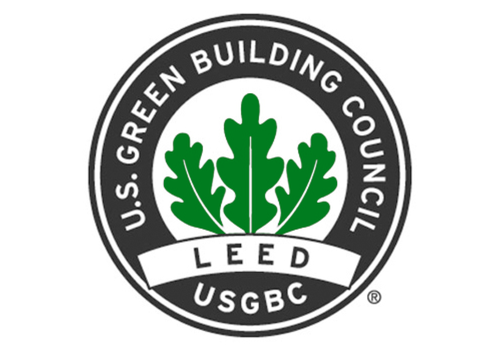
“As a general contractor, I’ve spent years in the construction of commercial and residential buildings. You name it, and I’ve built it (or at least something like it), and I can tell you this: most structures—from the materials, to the overall design, to the location itself—just aren’t all that “green.”
Fortunately, it doesn’t have to be this way. And with the help of LEED, increasingly, it’s not.
What is LEED?

The LEED rating is based upon factors such as:
* the sustainability of the construction site
* the renewability of construction materials
* water efficiency
* waste production, and
* indoor environmental concerns, like air quality and the availability of natural light.
When all of the pertinent data have been compiled and considered, LEED assigns the building in question points in the different categories. Buildings receive a rating based on their overall score. Those that rate spectacularly well in every category and earn a total of 80 points or more receive a platinum certificate. 60–79 points earn a gold certificate, 50–59 a silver certificate, and 40–49 total points a basic certification. Anything below 40 gets no certification at all.
Benefits of LEED
Most LEED homes come with built-in home automation technology that allows homeowners to save energy, water, and money by learning a homeowner’s habits and adjusting to those. Companies like Nest and others have led the way with groundbreaking home automation technology like programmable “learning” thermostats that can save us consumers money on our energy bills.
Builders and designers who adhere to sustainable practices and receive a high level of LEED certification benefit, too. Not only do they improve their own public image by demonstrating their commitment to the environment, but they’re also able to reap certain monetary rewards. Especially for those building large buildings or office or residential complexes, LEED certification can increase property values and decrease energy, water, and waste costs. Additionally, certain government programs offer rewards for buildings that are LEED certified. Overall, LEED is creating a climate in which eco-friendly design and green materials are gaining an advantage.
Additional Value if You Own a Leed Certified Home
Given enough time, LEED should be terrific both for the world you live in and your pocketbook. In addition to saving energy, LEED certification of privately owned homes has been known to increase residential property values. Of course, the effect that it has on the value will vary from area to area, but even in locations where the demand for green housing isn’t particularly high, potential buyers will still be impressed by reduced utility costs associated with LEED construction practices.
Finding and Financing a LEED Certified Home
If you’re in the market, how can you find a LEED certified home? Your real estate agent or certain online sites such as Listedgreen.com might help you locate potential properties. Still, because they’re relatively new, existing LEED certified homes may be a bit hard to come by.
The good news is that building your own LEED certified home isn’t nearly as expensive as you might assume. For an additional 1 to 7% of construction costs, you’ll be able to create a platinum certified house from the ground up. Of course, you also have the option of renovating your existing home to make it more LEED compliant. This may be a bit more difficult for certain homeowners, given that some factors may not be alterable (location comes to mind), but there are nonetheless many ways you can upgrade your home if you’re willing to undertake a renovation.
As a general contractor I’ve seen all sorts of buildings go up, but it’s only been during the last few years that people have really begun to take notice of the environmental and economic benefits these structures offer. The LEED certification program is a good way to judge just how “green” a building is. If you’re willing to invest a bit of extra time and money in the short term, you can get that same reassurance for your own property, and reap the benefits for many years to come.”
 David Glenn taps his 30 years of experience owning his own home-building business to review promising new technologies that offer consumers the opportunity to save energy and money and live greener lives. Connect with him on Twitter @davidglenn97.
David Glenn taps his 30 years of experience owning his own home-building business to review promising new technologies that offer consumers the opportunity to save energy and money and live greener lives. Connect with him on Twitter @davidglenn97.

















